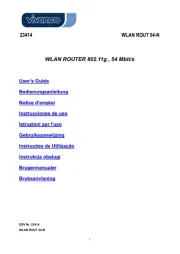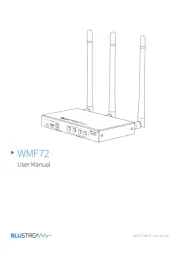Zebra 4522 T1 Manual
Læs gratis den danske manual til Zebra 4522 T1 (43 sider) i kategorien Router. Denne vejledning er vurderet som hjælpsom af 12 personer og har en gennemsnitlig bedømmelse på 4.3 stjerner ud af 6.5 anmeldelser.
Har du et spørgsmål om Zebra 4522 T1, eller vil du spørge andre brugere om produktet?

Produkt Specifikationer
| Mærke: | Zebra |
| Kategori: | Router |
| Model: | 4522 T1 |
Har du brug for hjælp?
Hvis du har brug for hjælp til Zebra 4522 T1 stil et spørgsmål nedenfor, og andre brugere vil svare dig
Router Zebra Manualer



Router Manualer
- Aztech
- Intellinet
- Kraun
- Key Digital
- Ruckus Wireless
- Güde
- Motorola
- IP-COM
- Xantech
- Black Box
- Edgewater
- Sitecom
- ATen
- PulseAudio
- Cambium Networks
Nyeste Router Manualer









